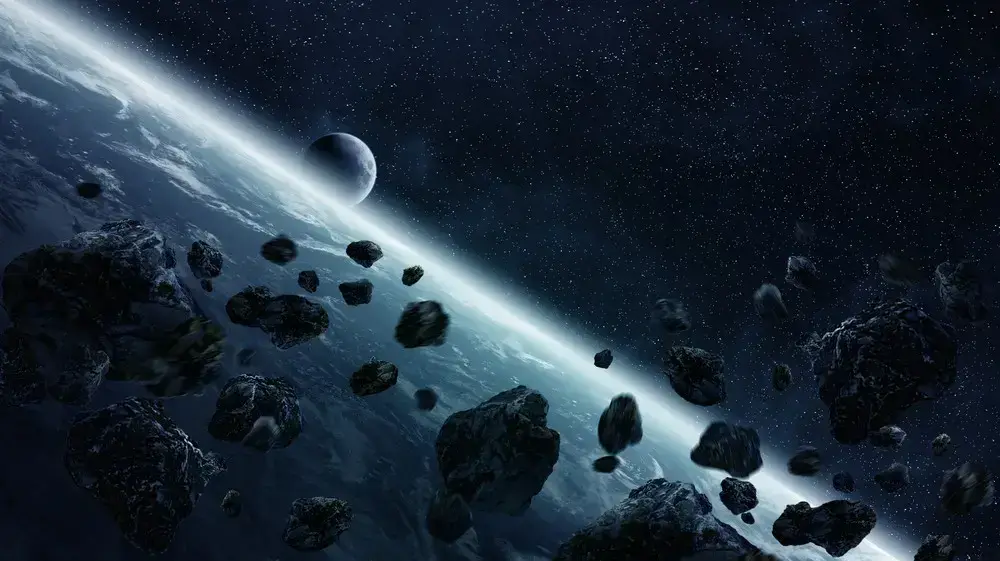US Department of Defense: An object from another star system is found in the depths of the ocean
According to estimates, the meteor comes from another star system and may reveal a lot about our universe.
Now, an expedition will set out to search for the interstellar object, known as CNEOS 2014-01-08, on the floor of the Pacific Ocean
Voila system!
technology
09/08/2022
Tuesday, August 9, 2022, 11:39 am Updated: 12:17 pm
Share on Facebook
Share on WhatsApp
Share on Twitter
Share by email
Share in general
Comments
Comments
Illustration: Meteors on their way to Earth (Photo: ShutterStock)
A meteorite that crashed into the Earth has been lying at the bottom of the Pacific Ocean for over 8 years.
This was recently confirmed by the Pentagon, the United States Department of Defense.
According to estimates, the meteor comes from another star system and may reveal a lot about our universe.
Following the Pentagon's approval, Howard University researchers are expected to set out as an underwater expedition to search for the interstellar object, known as CNEOS 2014-01-08, on the bottom of the Pacific Ocean, near Papua New Guinea.
While it was lying at the bottom of the sea, two more interstellar objects were discovered on Earth: Omoamua in 2017 and Comet Borisov in 2019.
Those who studied the trajectory of the bone that crashed in 2014, were Professor Avi Loeb from Harvard University and then graduate student Amir Siraj.
In view of the speed with which the object moved and hit the Earth, the two concluded that the meteor is not bound by solar gravity and therefore came from another solar system.
When Loeb and Siraj wanted to publish an article on the subject, they had to face a major problem - the researchers relied on data from a US Department of Defense spy satellite, designed to monitor the country's military activity.
The US military does not allow revealing the exact capabilities of the satellite and it is a guarded military secret.
The scientific community, on the other hand, is not ready to accept a study that does not specify the margin of error of the measuring device the researchers used.
Because of this, Siraj and Loeb's paper was not published, and the CNEOS 2014-01-08 meteorite remained a candidate for an interstellar object.
6/ "I had the pleasure of signing a memo with @ussfspoc's Chief Scientist, Dr. Mozer, to confirm that a previously-detected interstellar object was indeed an interstellar object, a confirmation that assisted the broader astronomical community."
pic.twitter.com/PGlIOnCSrW
— US Space Command (@US_SpaceCom) April 7, 2022
The situation changed in April 2022, when Joel Moser, chief scientist of the US Space Force's Space Operations Command, reviewed the classified data in question and "confirmed that the velocity estimate reported to NASA is accurate enough to indicate an interstellar orbit."
Without the classified numbers of the measurements, Leib and Siraj's research could not pass peer review.However, the US Space Force's approval encouraged Siraj and Loeb to organize an expedition to find the bone and study it well.
As the meteorite crashed into the atmosphere, a large part of it is believed to have burned up.
What remains of it are apparently only fragments scattered across the ocean floor.
However, the researchers are optimistic because the satellite tracking data, combined with wind and ocean current data, can narrow the search to a reasonable range of only 100 square kilometers. The interstellar remains of the meteorite are likely magnetic. Therefore, the researchers decided to team up with a company specializing in ocean technology and send A ship that will drag a large magnet across the surface of the seabed. Using the magnet it will be possible to fish the fragments of the meteorite from the seabed. The cost of the search is estimated at 100 thousand dollars.
In an interview with Universe Today last year, Loeb explained that the search for the meteorite will allow researchers to find out whether the object is natural rock or not This is an artificial relic created by a technological civilization from another planet. Even if it is a rock, finding it will allow us to learn about the composition of the rocky material beyond our solar system, and that in itself will be an important discovery.
More in Walla!
The future of education and security in Israel: the heads of the regional councils speak
In cooperation - the regional government center
technology
Tags
meteor

